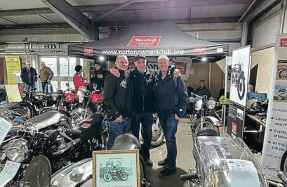Piston games and cams

Pistons, compression ratios and efficiency
Many have detailed success with extreme compression ratios, but in reality the limiting factor is often, in the first instance, not the engine, but the quality of the fuel available. And if one is tuning for racing, entry regulations may limit compression ratio choice. Then, of course, as nothing is ever for free, drastic increases in compression ratio will effect engine reliability, although modest increases may have little or no effect.
It must also be noted that while modest compression ratio increases alone may or will improve performance modestly, for best effect the compression ratio increase must be accompanied by a number of other considerations, including cam work to increase lift and/or opening times for valves, valve sizes, combustion chamber modifications, fuel choices, carburettor re-setting and other factors – none of which are covered here.
With methanol and methanol-based fuels it is often possible to run with compression ratios of up to 16:1. In such cases, engines will naturally generate extra heat and to compensate owners/tuners ‘over-jet’ by increasing the main jet size over and beyond what is required to run well. The excess fuel aids engine cooling and, as except in extreme cases methanol doesn’t wet plugs, excess is expelled through the exhaust system and engines give no signs of running rich. While modern combustion chamber design permits higher compression ratios with lower grade fuels, as far as classic enthusiasts are concerned, 10.5:1 was considered a safe upper limit with 100 octane petrol or circa 90 octane with a 50/50 blend of petrol and benzene, while 7.5:1 was appropriate in period for ‘pool’ grade petrol. Of course, these figures are a guide only to upper compression ratio limits for performance work and many standard road machines would have left the factory with much lower compression ratios.
As an aside, we currently get worried about the ever-increasing amounts of ethanol present in the ‘green’ fuels foisted on us. But in the immediate pre-Second World
You’re reading a preview, subscribe to read more.
Start your free 30 days



